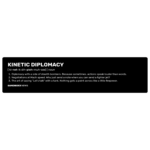The Pentagon wants a highly capable nonlethal weapon for drug boat interdiction
- By Hope Seck
Share This Article
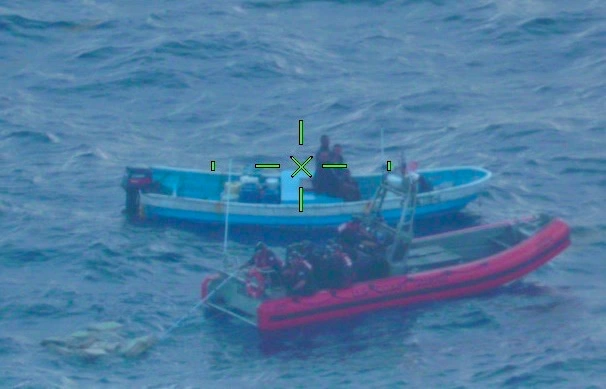
On the heels of at least three recent incidents in which the Pentagon ordered lethal strikes on alleged Venezuelan drug-trafficking vessels, its innovation arm is publicly calling for nonlethal drug-boat-interdiction solutions.
A joint solicitation from the Department of Defense and Department of Homeland Security, published by the Defense Innovation Unit this month, invites companies to submit “solutions capable of reliably stopping non-compliant small watercraft without placing undue risk to the DHS/DoW personnel conducting these interdictions, operators/passengers onboard the non-compliant vessel (NCV) and nearby innocent civilians on the water.”
The solicitation described a weapon or device that could disable the suspected drug vessel from a distance without it to become a danger to bystanders or any military or law enforcement personnel. And it includes a scenario that takes place off the California coast, indicating a desire to use such a tool in places where a greater proportion of American civilians might be present.
In this scenario DIU describes, a Coast Guard boat identifies a “suspect vessel” moving at high speeds through U.S. territorial waters.
“The USCG boat turns toward the suspect vessel, which observes the USCG asset coming toward them and starts to accelerate and swerve erratically,” the solicitation states. “The vessel’s operator tosses his cell phone into the water and starts to turn back toward the international maritime border. At this time, the suspect vessel is deemed to be noncompliant and the appropriate use of force rules apply while the USCG boat attempts to interdict the NCV.”
However, because of the speed of the suspected drug boat and the position of the vessel operator, who’s “straddling the engine of the personal watercraft,” the Coast Guard officer in charge assesses that firing on the boat, or any other immediate use of force, would put nearby boaters and any passengers on the watercraft at risk.When the non-compliant vessel in the scenario crosses into Mexican waters a short time later, the Coast Guard boat in pursuit has no choice but to stop the chase and let it go.

“If the USCG asset had a non-lethal solution that could have disabled the NCV from a distance and not placed undue risk to nearby innocent civilians and the passengers onboard the NCV, they could have safely apprehended the NCV and maintained the United States’ border sovereignty and territorial integrity,” DIU added.
Coast Guard drug boat interdiction operations, famously, can be extremely high-intensity. In a 2019 video picked up by news sites around the country, a Coast Guard interdiction team pursues a narco-sub off the California coast. In the video, the leader of the Coast Guard team screams “alto tu barco” – broken Spanish for “stop your boat.” When the sub continues despite repeated orders to stop, he and another interdictor board the sub and bang on the hatch until the smugglers inside open it and are apprehended.
According to the Coast Guard, that team – from the California-based Cutter Munro – was part of a crew that seized 39,000 pounds of cocaine and arrested 55 alleged smugglers during a single deployment.
Related: These are the Coast Guard’s special operations forces
The White House’s recent announcements that U.S. lethal strikes have sunk at least three vessels identified as being affiliated with the Venezuelan gang “Tren de Aragua” represent a break with standard Coast Guard protocol, which allows the use of force in specific scenarios, but also focuses on apprehending suspected traffickers for prosecution. Some have raised concerns about the legality of such strikes, and it’s not yet clear what kind of policy will be established for continued interdiction of drug smugglers.
Conventional Coast Guard drug-busting ops on the water continue, though: Just days ago, the service published another video clip of operators chasing down and boarding a narco-sub and apprehending everyone inside.
The DIU solicitation suggests that the boat-stopping weapon it seeks may be powered by electromagnetic radiation or be a new electronic attack method. It’s got to be transportable and deployable from small Coast Guard boats 25-45 feet long and has to work on its own, with limited support from the boat itself. Ideally, according to the solicitation, it should be able to defeat multiple noncompliant watercraft at the same time, and be effective against all engine and propulsion types. It needs to work in conditions as bad as Sea State 6 – which denotes the presence of 13 up to 20 feet waves – and be effective against boats traveling up to 80 miles per hour.
Interested parties have until September 30 to submit their ideas.
While the administration’s focus on putting an end to drug trafficking it says is responsible for some 100,000 overdose deaths per year, the interest in a nonlethal method for halting boats is not new. In 2019, the Naval Surface Warfare Center, Panama City Division announced it was looking into the use of hagfish slime – an expanding gel excreted by the eel-like creature – as a way to gum up the motors of oncoming boats and bring them to an urgent stop.
Feature Image: The Coast Guard Cutter Joseph Tezanos small boat crew recovers 13 bales (1,653 pounds) of cocaine jettisoned from a drug smuggling vessel that was interdicted near Puerto Rico Aug. 3, 2022. Four Dominican Republic nationals who were apprehended in this case are facing federal prosecution in Puerto Rico. This interdiction was the result of multi-agency efforts involving the Caribbean Border Interagency Group and the Caribbean Corridor Strike Force. (U.S. Coast Guard photo)
Read more from Sandboxx News
- Russian Air Force increases violations of NATO airspace
- SWCC are the Naval Special Warfare’s elite boat operators
- F-22 achieves record-breaking shot with Raytheon’s newest AIM-120 missile
- Australia’s first collaborative combat aircraft is closer to full operational deployment
- How the Argentinians took out a British warship
Related Posts
Sandboxx News Merch
-

‘AirPower’ Classic Hoodie
$46.00 – $48.00Price range: $46.00 through $48.00 Select options This product has multiple variants. The options may be chosen on the product page -
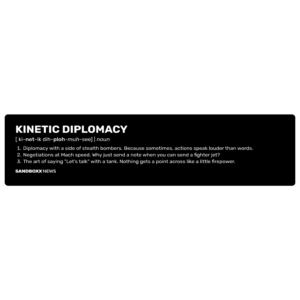
‘Kinetic Diplomacy’ Bumper Sticker (Black)
$8.00 Add to cart -

‘Sandboxx News’ Trucker Cap
$27.00 Select options This product has multiple variants. The options may be chosen on the product page
Hope Seck
Hope Hodge Seck is an award-winning investigative and enterprise reporter who has been covering military issues since 2009. She is the former managing editor for Military.com.
Related to: Gear & Tech, Military Affairs

All the bonuses and benefits for troops in the new defense budget
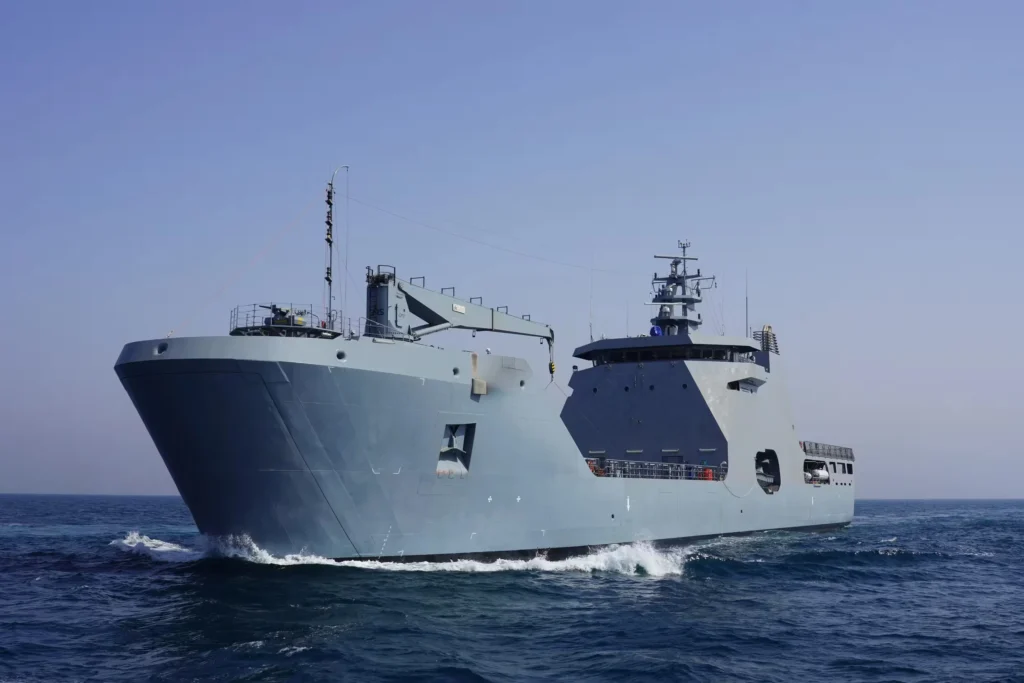
The Marine Corps’ best Christmas present was a new class of landing ships
Sandboxx News
-

‘Sandboxx News’ Trucker Cap
$27.00 Select options This product has multiple variants. The options may be chosen on the product page -

‘AirPower’ Classic Hoodie
$46.00 – $48.00Price range: $46.00 through $48.00 Select options This product has multiple variants. The options may be chosen on the product page -
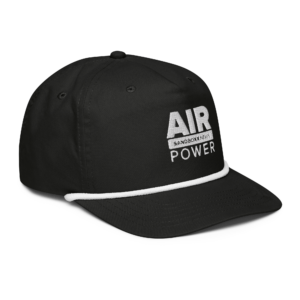
‘AirPower’ Golf Rope Hat
$31.00 Select options This product has multiple variants. The options may be chosen on the product page -

‘Sandboxx News’ Dad Hat
$27.00 Select options This product has multiple variants. The options may be chosen on the product page

